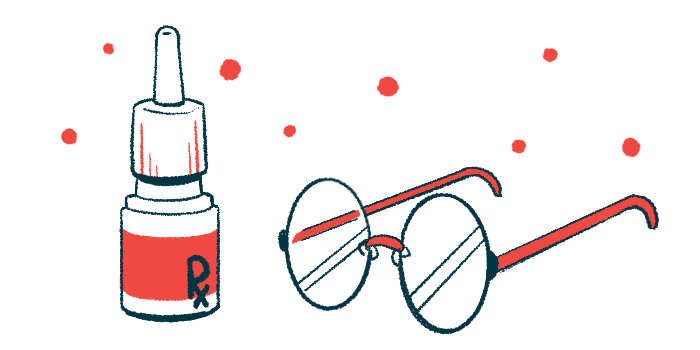Autologous serum, platelet-rich eye drops both good for Sjögren’s dry eyes
Researchers compared safety, efficacy of both types in 36 women

Autologous serum and platelet-rich eye drops work equally well to relieve dry eyes in people with primary Sjögren’s syndrome, but the latter may be more convenient because they take less time to prepare, a study suggests.
The study, “Efficacy and safety of platelet-rich plasma and autologous-serum eye drops for dry eye in primary Sjögren’s syndrome: a randomized trial,” was published in Scientific Reports by researchers in South Korea.
One of the hallmark symptoms of Sjögren’s is excessive eye dryness, which can cause infection and damage to the cornea, the transparent layer that forms the front of the eye.
Autologous serum eye drops are prepared from a patient’s own blood, which is processed to remove the serum, or the clear liquid part, and then mixed with a salt solution before being dispensed into dropper bottles for use. Platelets form blood clots and help wounds heal. To prepare platelet-rich eye drops, a patient’s blood is mixed with sodium citrate to prevent clotting. The blood is then spun to separate it into layers. The middle layer, rich in platelets, is mixed with a salt solution before use.
Comparing autologous serum, platelet-rich eye drops
A Phase 4 clinical study (KCT0008103) compared the safety and efficacy of autologous serum and platelet-rich eye drops for treating eye dryness in 36 women with a diagnosis of Sjögren’s.
The women were randomly assigned to either type of eye drop for 12 weeks (about three months), putting one drop in each eye six times a day, with a two-hour break between drops. They could also use up to two drops of artificial tears, if needed.
The study’s primary goal was to measure how each treatment improved corneal staining scores, which involve counting areas (dots) of corneal damage based on the Sjögren’s International Collaborative Clinical Alliance protocol.
Average corneal staining scores dropped significantly over 12 weeks with both autologous serum eye drops (from 3.09 to 2.13 dots) and platelet-rich eye drops (from 3.25 to 2.23 dots), indicating less damage. There were no differences between the two groups.
Researchers also looked for differences in damage to the conjunctiva, a thin, clear membrane that protects the eye. Average conjunctival staining scores also dropped significantly in both groups, with no differences between groups.
Similar observations were made at an interim, four-week mark.
The average tear film breakup time — the time it takes for a first dry spot to appear on the cornea after a blink — increased significantly from the study’s start to four and 12 weeks after treatment. No differences between autologous serum and platelet-rich eye drops were seen, however. No side effects were reported with either treatment.
Both autologous serum and platelet-rich eye drops “are effective in improving corneal and conjunctival staining scores,” wrote the researchers, who said studies are needed that include participants of both sexes.
Eye drops that are rich in platelets have “a shorter preparation time using a commercial preparation kit,” reducing the process by about two hours over autologous serum eye drops and making them a “a good alternative” for treating eye dryness, the researchers said.







